work portfolio
I'm on a mission to become a professional user experience researcher. I've worked with Java, HTML/CSS, SwiftUI, and Figma to build a variety of projects. Here's a summary of my work so far.
iSpace Apple Vision Pro

In my New Media Capstone course, I served as the solo developer and team lead for an Apple Vision Pro app designed to enhance and engage young audiences in space education.
In my New Media Capstone course, I served as the solo developer and team lead for an Apple Vision Pro app designed to enhance and engage young audiences in space education. Over the course of the semester, I led a multidisciplinary team of four—comprising designers, marketers, and web developers—to craft a compelling narrative and deliver a polished product.
The app, iSpace, enables users to explore information, interact with physics objects, and test their knowledge through quizzes. Aiming to create a fresh and exciting experience, I focused on interactive elements in VR/AR. As a result, the Vision Pro app features physics objects, various skyboxes, and a menu that integrates seamlessly with the 3D elements.
Above, you can see a demo of the final product recorded from a first-person perspective using the newly released (when we worked on this) Apple Vision Pro.
I developed the app using Apple's Xcode and SwiftUI within the VisionOS environment. Since the product had not yet been released when I began development, there were few tutorials available. Despite these challenges, I learned quickly and made significant progress. Once our team finally had access to the headset, I dedicated a lot of time ensuring that our concepts effectively translated into the physical product.
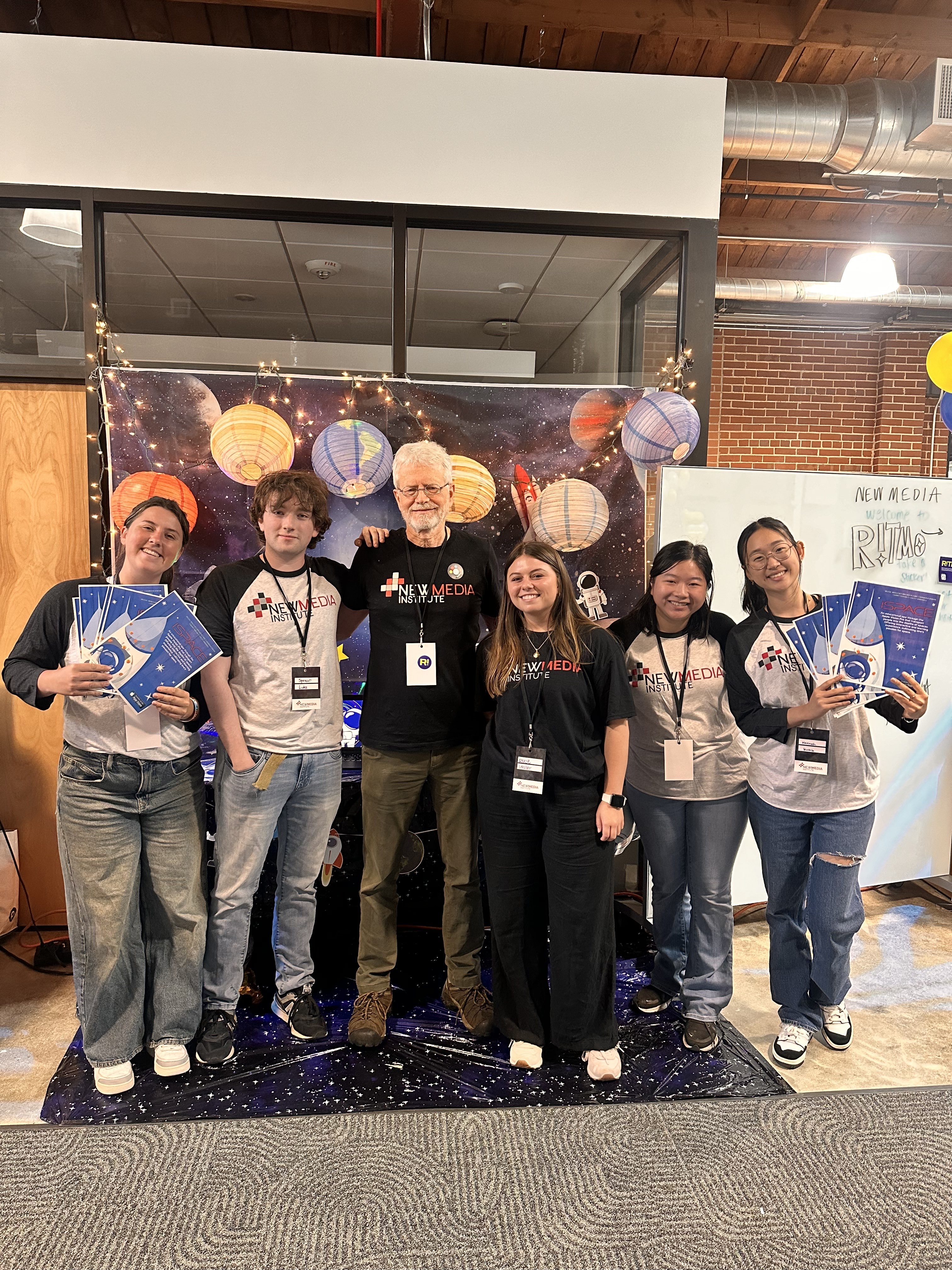
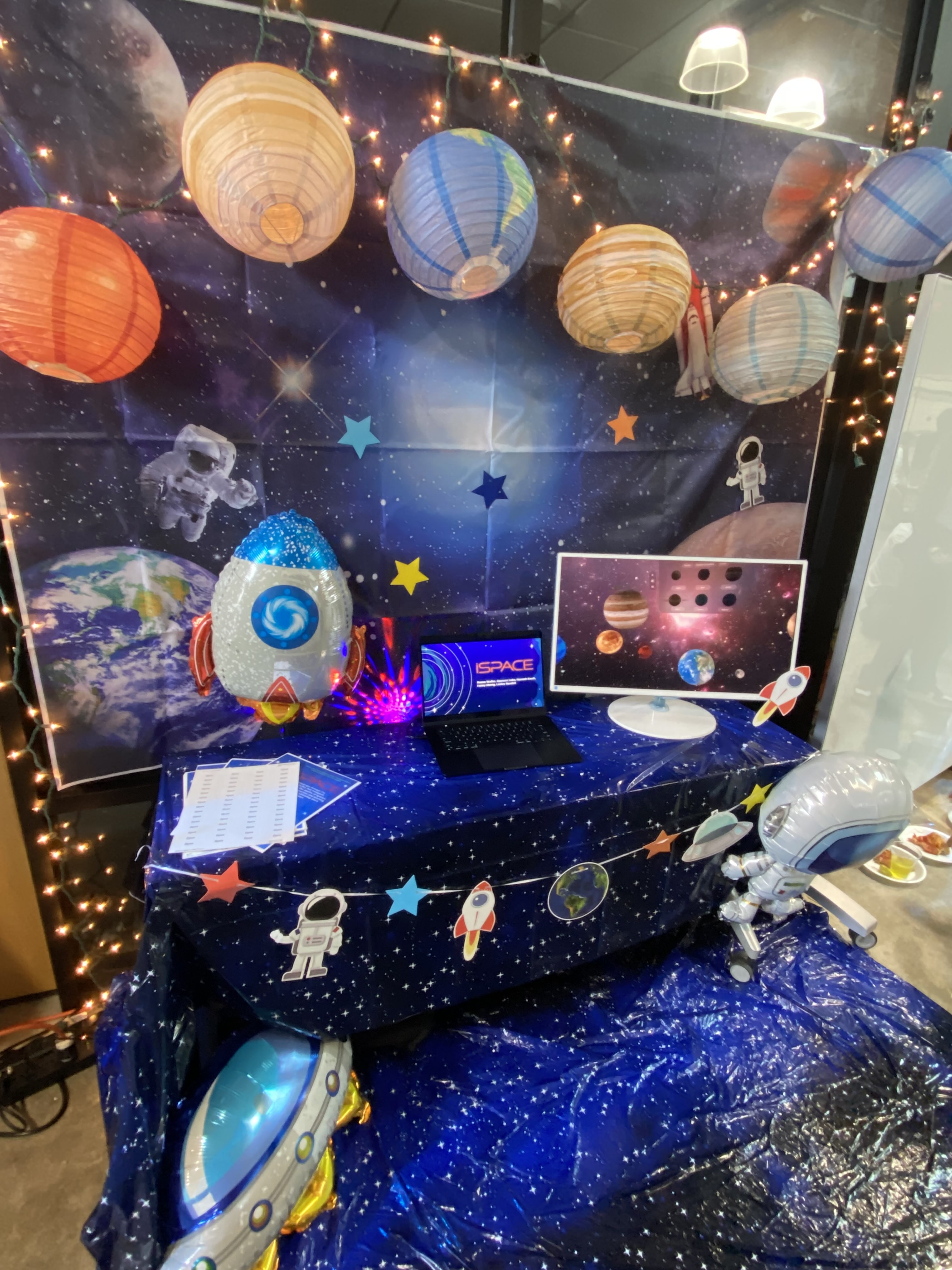
Check out iSpace now on the Apple App Store or download the repository on Git Hub!
Well Played Think-Aloud Study
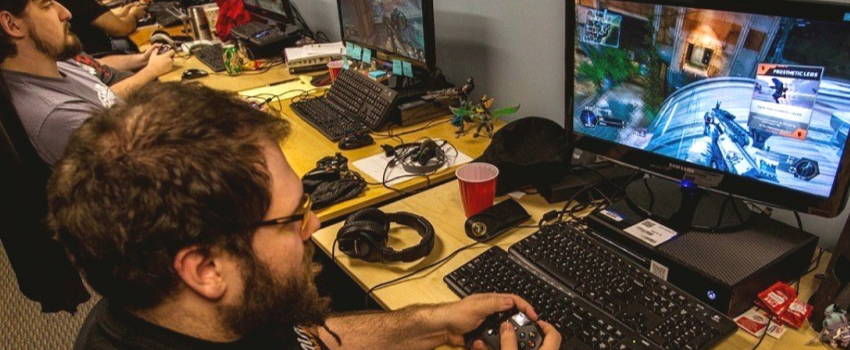
At Well Played, I collaborated with UXR teams to develop comprehensive qualitative research reports for leading video game companies. My responsibilities included generating detailed figures from large data sets to support and express key insights, and creating topline reports and polished slide decks to present user research to big name clients in the gaming industry. I also designed screening surveys to recruit qualified participants for user playtests.
At Well Played, I collaborated with UXR teams to develop comprehensive qualitative research reports for leading video game companies. My responsibilities included generating detailed figures from large data sets to support and express key insights, and creating topline reports and polished slide decks to present user research to big name clients in the gaming industry. I also designed screening surveys to recruit qualified participants for user playtests.
Over the course of my internship, I independently designed and moderated an internal qualitative research project. I was tasked with testing and analyzing a new method of think-aloud research. A think-aloud study is a research method where participants vocalize their thoughts while interacting with products, akin to a streamer discussing their gameplay without an audience. This approach enables researchers to gain insights into participants unbiased, real-time opinions rather than the opinions they might form after listening to others.
I chose the game Risk of Rain 2 for the study, hosting six paid participants at our Atlanta office. After providing instructions, participants engaged in gameplay followed by a live discussion. Key findings included:
After providing instructions, participants engaged in gameplay, followed by a live discussion. Here are some of the key findings we gained from the study:
- Participants initially started off quiet but became more talkative after an average of 5 minutes.
- As the study progressed, participants grew quieter, with only around 20% continuing to comment regularly after the 35-minute mark.
Solutions identified to address these issues were:
- Starting the study with a group discussion to energize social commentary and create a comfortable atmosphere.
- Implementing regular breaks every 30 minutes to allow participants to talk as a group and re-energize their conversational skills.
- Engaging with participants during gameplay to encourage them to talk, then gradually stepping back to allow them to continue independently.
Additionally, I developed and defined key user metrics to reflect user experiences in playtests and communicated actionable insights to improve user research. My experience at Well Played provided invaluable professional research experience, allowing me to demonstrate leadership, initiative, and responsibility.
Class Connect Scheduler
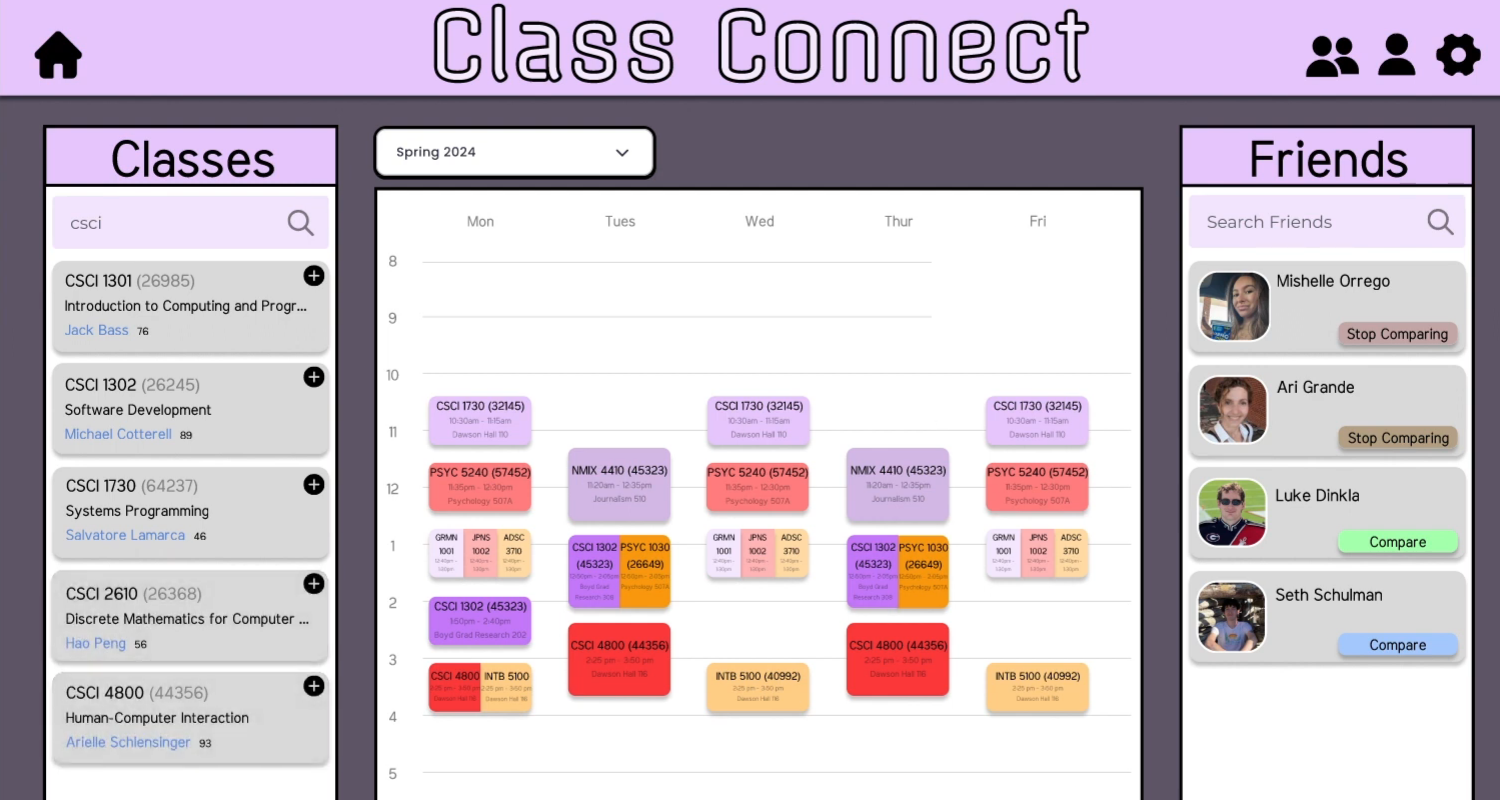
Class Connect was a class scheduler developed as part of our research and design work in Human-Computer Interaction.
Class Connect was a class scheduler developed as part of our research and design work in Human-Computer Interaction. Over the semester, my four-person team employed various research, analysis, and design methods to create a solution for a problem space we identified.
Starting with class registration as our focus area, we began with observations and quickly moved to user interviews. I gained experience with long, semi-structured interviews, which helped us create empathy maps and pinpoint several user pain points:
- Registration can be stressful and time-consuming.
- Scheduling advisor meetings can be challenging.
- Finding credit-filling and interest-aligning electives is difficult.
- The current UI is overly complicated and forces students to use third-party apps.

Next, we developed "how might we" statements and points of view to explore potential solutions. Through iterative processes, including sketches, wireflows, and wireframes, we devised a practical solution to address these issues.

We then tested our potential solutions by creating an in-depth paper prototype to help users visualize the process and flow of our design. Participants were asked to complete various tasks using the prototype, and we recorded their pain points, comments, and other feedback to refine the design.

Our semester concluded with the creation of a class scheduler design concept using Figma. We conducted multiple rounds of user testing to perfect the design as much as possible. Click below to see the final product on Figma or access the final report for more details:
Georgia Gambling and Decision Lab
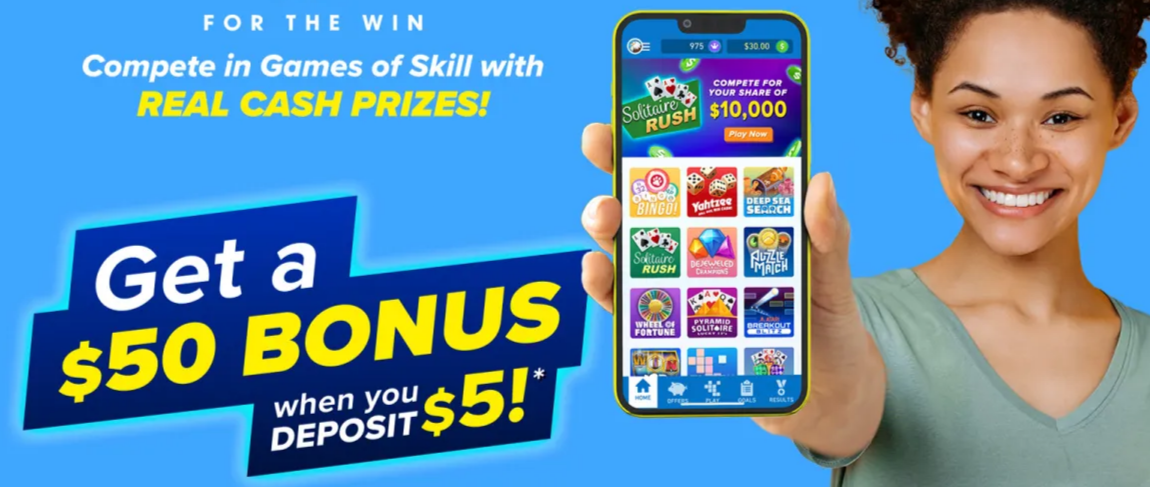
Under the guidance of Dr. Adam Goodie and PhD student Theresa Reilly, our team investigated the relationship between point-based incentives and real-money gambling tendencies in video games.
Under the guidance of Dr. Adam Goodie and PhD student Theresa Reilly, our team investigated the relationship between point-based incentives and real-money gambling tendencies in video games. During this two year study, I helped to prepare materials, run participants, and analyze footage and data. Our small team ran over 250 participants through one of three conditions involving the game "Catch 21", a blackjack variant where players try to stack cards to reach 21: Under the guidance of Dr. Adam Goodie and PhD student Theresa Reilly, our research team investigated the relationship between point-based incentives and real-money gambling tendencies in video games. Over the course of this two-year study, I assisted in preparing materials, conducting participant sessions, and analyzing footage and data. Our small team ran over 250 participants through one of three conditions involving the game 'Catch 21', a blackjack variant where players aim to stack cards to reach 21:
- Control Play: Participants play Catch 21 for points on a separate website before transitioning to our main site, where they have the option to play for cash.
- Free Play: Participants play on our main site for points only.
- Cash Play: Participants play on our main site for points and then are given the choice to continue playing for cash.
Quickly completing stacks awarded higher points as players competed against real opponents. Participants competed for points and were later offered a $20 gift card, which they could either bet on the game or keep and continue playing for points.
While the study has yet to be officially published, preliminary data shows that 45.23% of participants chose to gamble the money after initially playing for points. Complete statistics will be available once the study concludes, and I will provide a link here.
Fantasy Minecraft Datapack
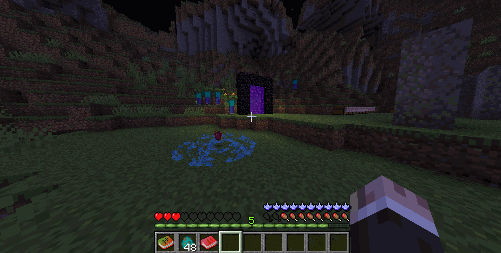
Over the course of two years, I collaborated with a small team of friends to develop a large-scale Minecraft datapack.
Over the course of two years, I collaborated with a small team of friends to develop a large-scale Minecraft datapack. This project introduces 10 classes, 9 races, and hundreds of new items and abilities, reimagining classical fantasy races within the Minecraft system. From Orcs and Elves to Wizards and Alchemists, our aim was to bring a fresh perspective to traditional fantasy elements. Players can craft a wide variety of custom items and uncover new abilities throughout their adventures.
The datapack is still a work in progress, and we continue to update it with each new Minecraft release. If you'd like to check out our progress, see the links below for our GitHub repository and a datapack showcase video. Please note that if the GitHub link is inactive, it may be temporarily private. Apologies for any inconvenience.
SwiftUI Jukebox
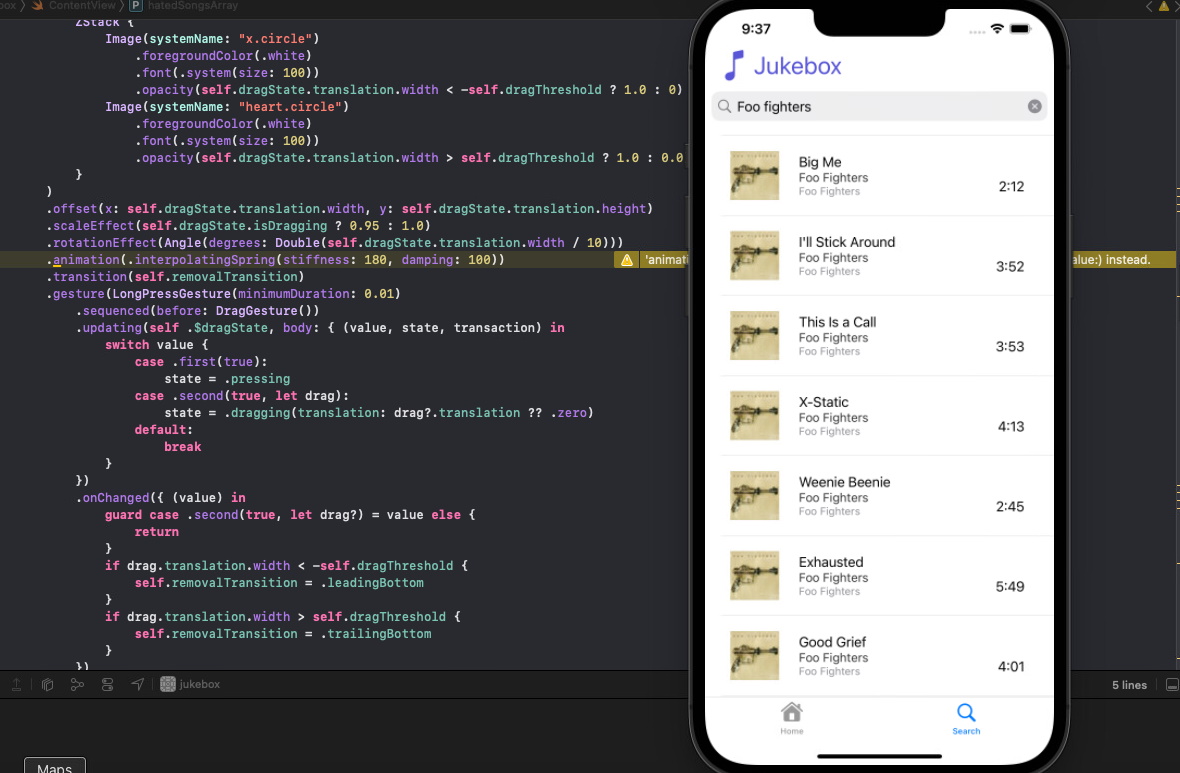
For my final app development project, I created a jukebox app using SwiftUI.
For my final app development project, I created a jukebox app using SwiftUI. The app leverages the iTunes API to let users search for songs by song, artist, or album names. It displays the top 200 results, allowing users to preview any track. Additionally, users can swipe left to favorite songs or swipe right to dislike them, with categorized songs featured on the home page.
Compare Country Information
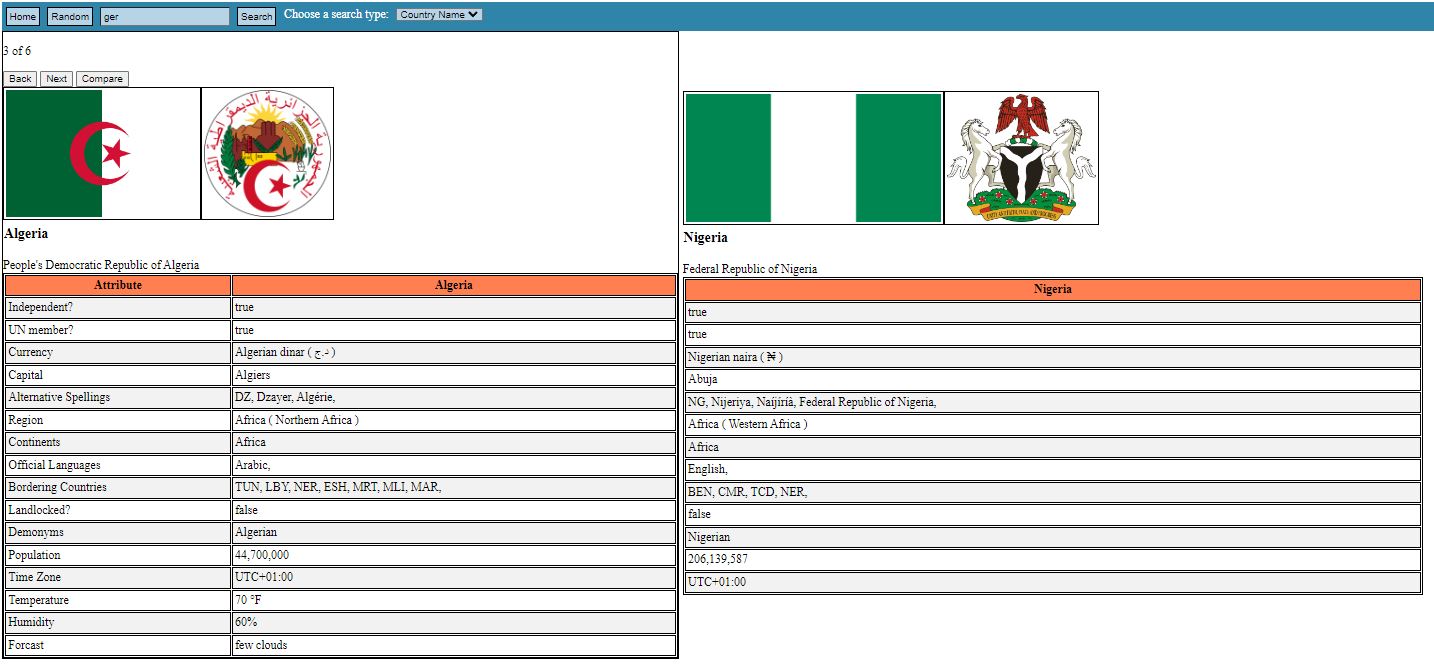
For the final project in Advanced Web Development, I developed a country almanac search tool that pulls data for any country based on user search parameters using multiple APIs.
For the final project in Advanced Web Development, I developed a country almanac search tool that pulls data for any country based on user search parameters using multiple APIs. I utilized the 'Rest Countries' and 'Open Weather Map' APIs to provide accurate, up-to-date information. Users can search for countries by name, region, language, or currency. Additionally, they can easily compare two countries side by side with a horizontal view. You can also check it out below!
iTunes Music Player
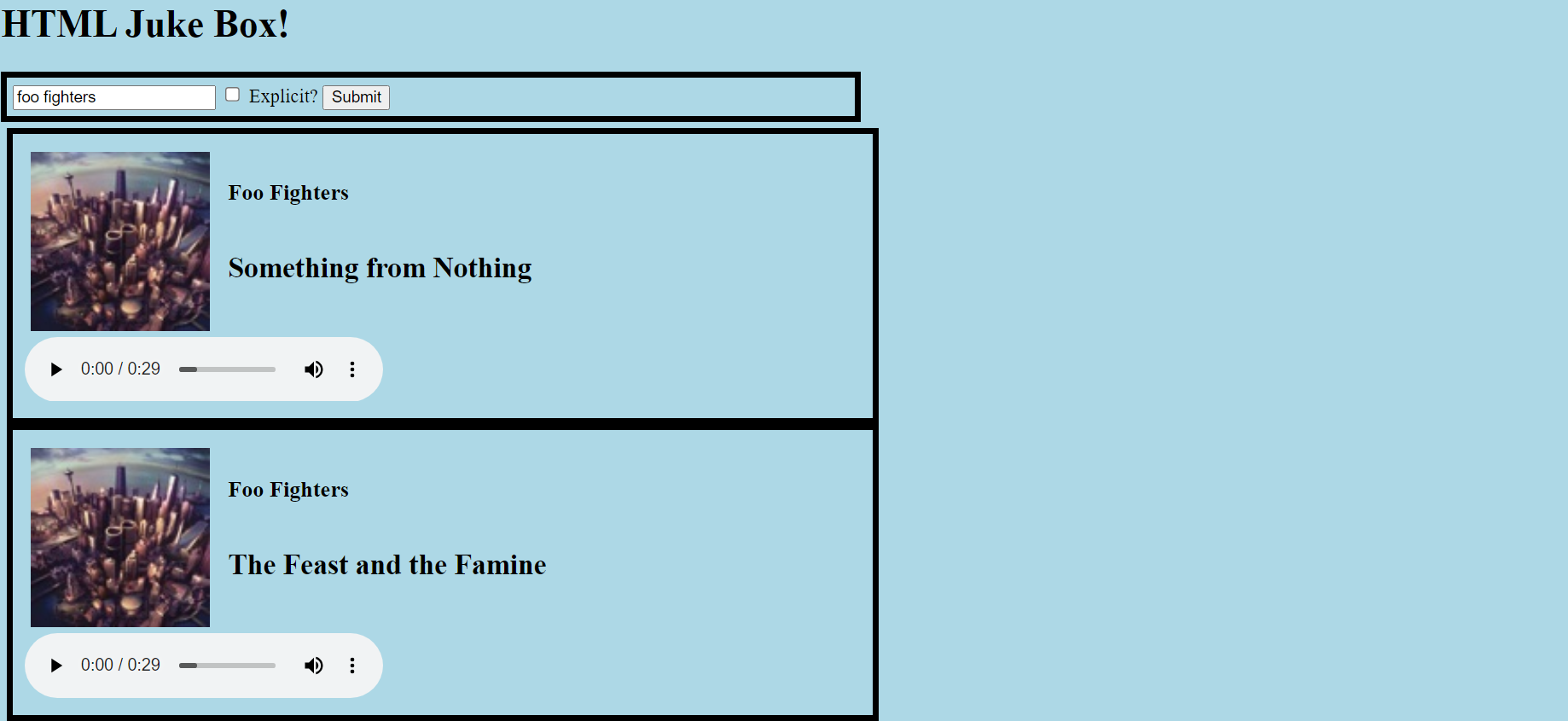
For this project, I used HTML, CSS, and JavaScript to create a tool where users can search for songs, albums, or artist names.
For this project, I used HTML, CSS, and JavaScript to create a tool where users can search for songs, albums, or artist names. The iTunes API returns results with album art, song previews, and artist names. I also included a checkbox feature that allows users to exclude explicit content. Check it out below!
Album Art Viewer With Java
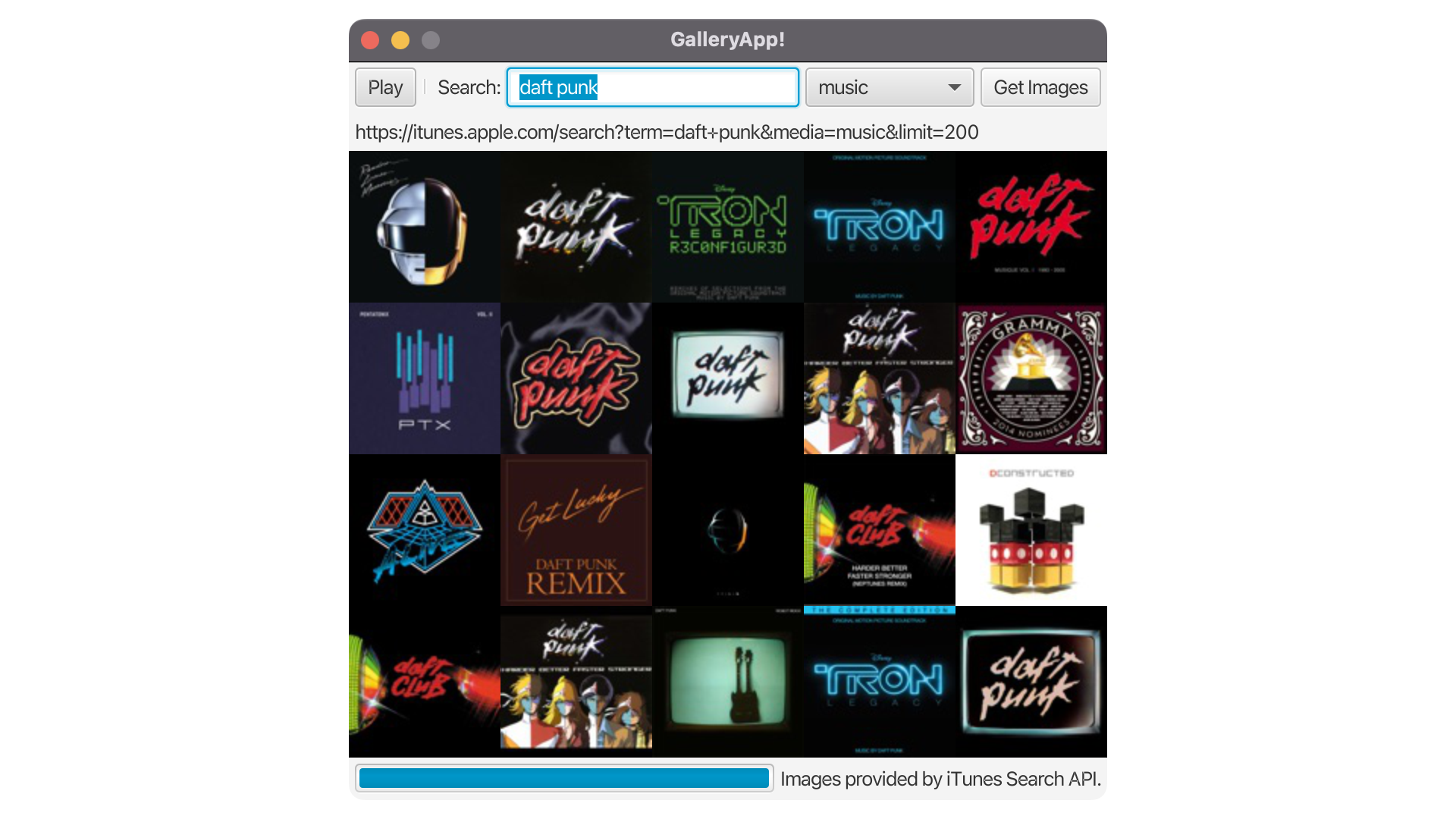
In my Software Development class, I created a Java program that retrieves album art from an API search and rotates the images on a timer.
In my Software Development class, I created a Java program that retrieves album art from an API search and rotates the images on a timer. This project was designed to help me learn about threads, APIs, and user interface (UI) development in Java. If you'd like to see the program in action, check out the video below.
Through the Software Development course, I gained skills and experience in intermediate Java programming. I learned the fundamentals of software creation, threading, and best practices in coding, including the use of interfaces and object-oriented programming (OOP).
Gmod Addon
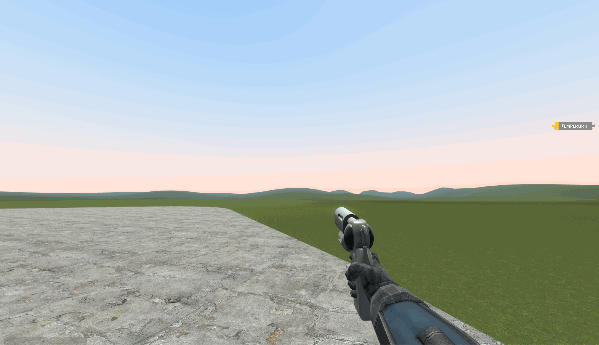
I spent some time learning LUA scripting to create an addon (mod) for Garry's Mod on Steam.
I spent some time learning LUA scripting to create an addon (mod) for Garry's Mod on Steam. This addon allows players to shoot a revolver and control the bullet from a third-person perspective, as if they were the bullet itself. The mod has garnered nearly 16,000 downloads and has been updated several times over the years with new textures, bug fixes, and various improvements.
Check it out for yourself over on the Steam Workshop linked below: